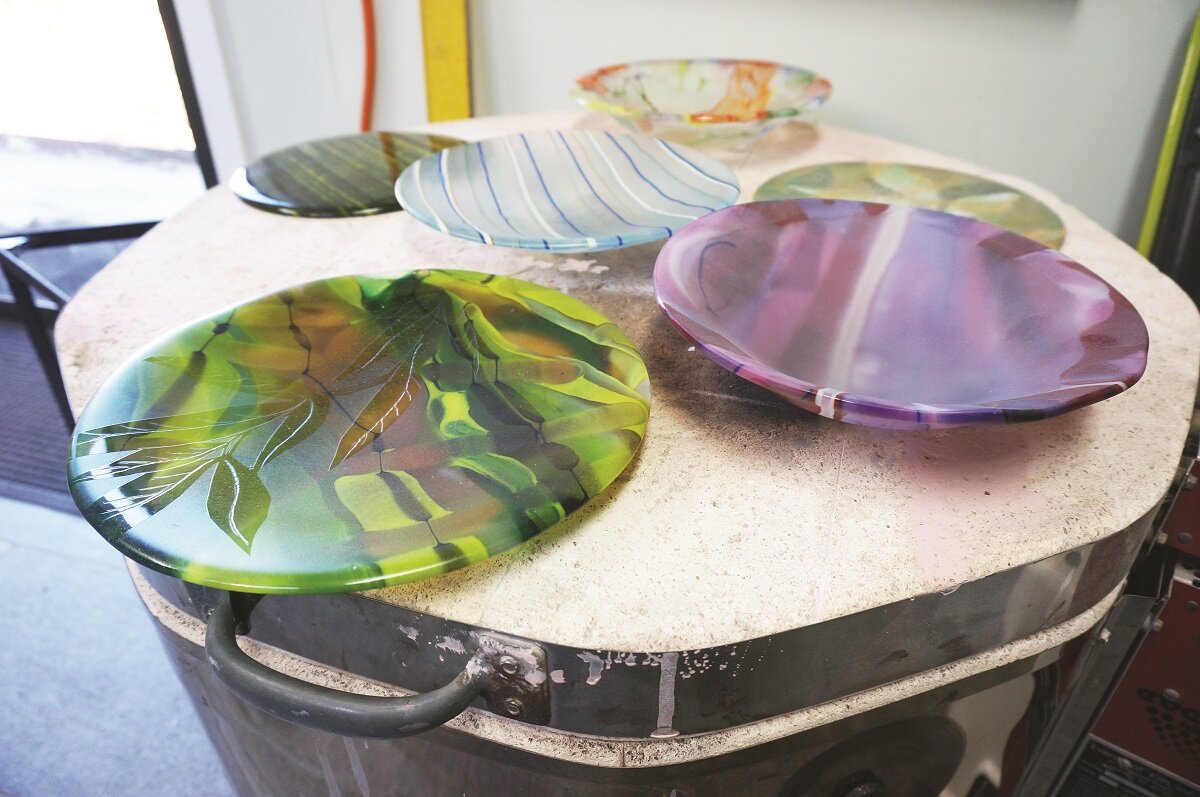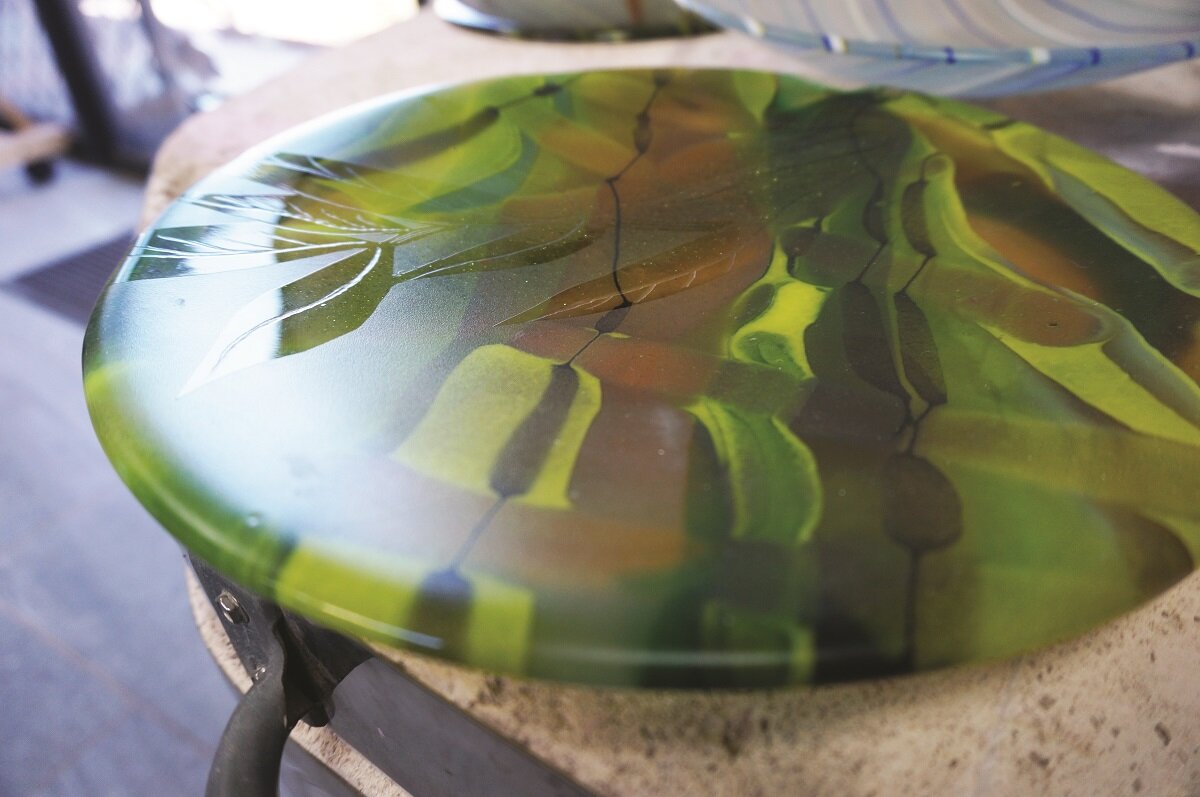Addicted to glass
“Anyone I know who does anything with glass is addicted to it,” says Kimberley Ivory, in her backyard glasswork studio.
Sheets of glass lie stack against one wall of the small workspace, while the bench is covered in small coloured glass strips. A kiln the size of a small coffee table sits on the floor upon which are examples of Kimberley’s finished work.
“I had always been interested in glass, I think I started collecting glass paperweights when I was in my 20s, then in the late 90s I did a course in glass and got a bit hooked!
“I got fascinated by what you could do with glass, a kiln and some heat and started taking courses in it… it is quite addictive!”
While most people are familiar with blown glass, Kiln formed glasswork involves fusing pieces of glass together in the intense heat of a kiln.
“It uses a whole range of different techniques to produce a final product, so there is a whole lot of steps in the production process… it is quite a versatile craft,” said Kimberley.
“Blowing hot glass is not something you can do in your garage very readily and it is a team sport generally, you need other people to help you, whereas kiln formed glass you can pretty much do it on your own so it is much more user friendly for someone who wants to do it as a hobby or part-time activity.”
The contradictory nature of glass is one of its appeals, said Kimberly. It is both a liquid and solid at the same time. Very malleable, yet fragile. Can be both beautiful and also eminently practical.
“Glass is a really fascinating,” she said. “You can do a lot of things to it, but people are really intimidated by it — they are scared of glass, but it is something they deal with every single day. So, there is this juxtaposition of beauty and fragility and fear and harm that most glass artists will tell you that they find fascinating.”
There is certainly a technical side to working with glass as not all glass is compatible and different glasses will react differently with each other, but there is also a certain serendipity to the final form each work takes that Kimberley finds delightful
“The kiln itself is part of the process and it adds to that which comes out. So, it will change according to what I like to call the ‘Kiln gods’ and how good they are feeling that day and that is really appealing.
“Colours will spread out, they will thin out, they'll go lighter and they even change because there are a lot of chemical reactions involved… so you can plan to a point but you never know exactly what you are going to get, I actually really like that.”
Find more examples of Kimberley’s work on Instagram @black_shed_glass



